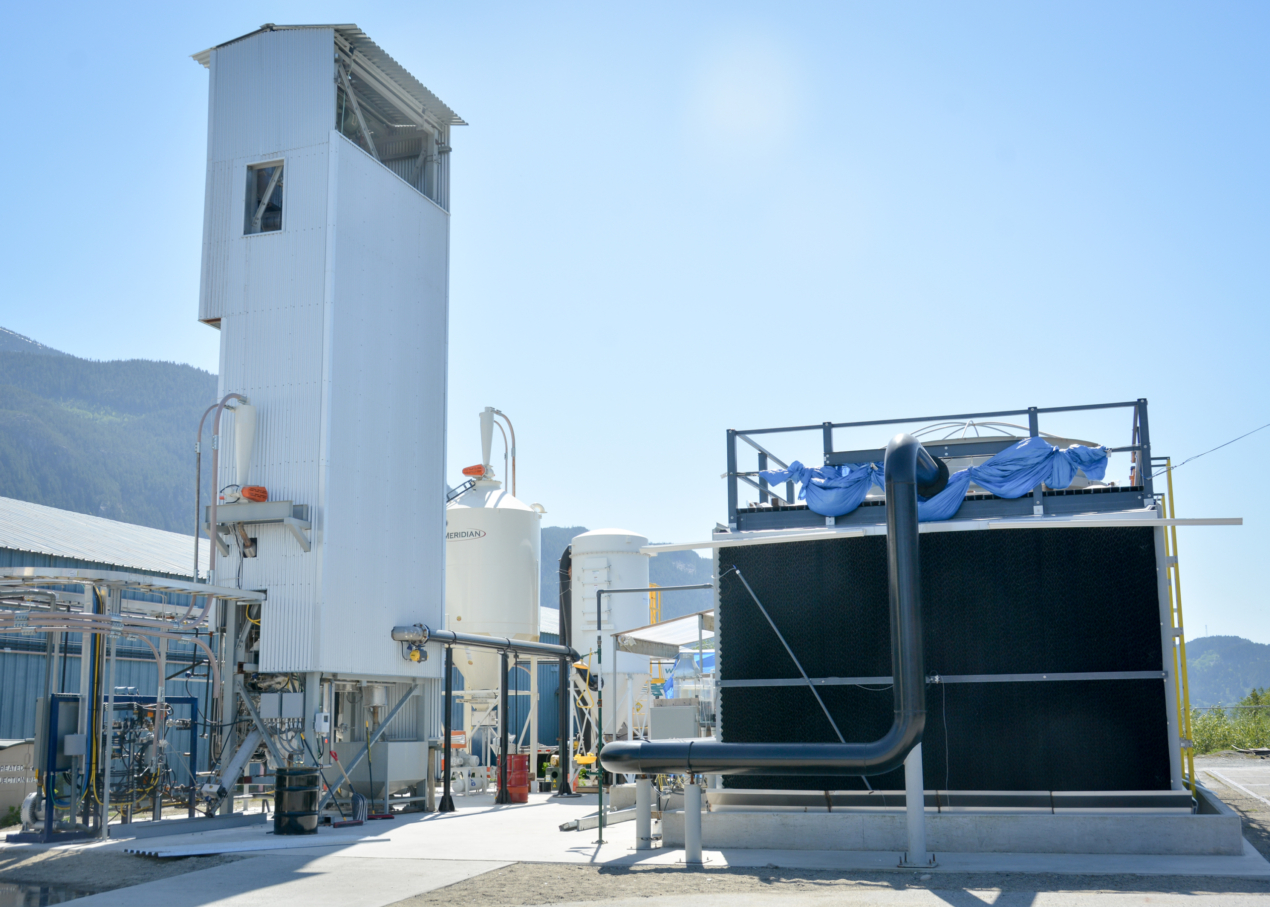Is direct air capture going to save our industries and our planet?
24/06/2022

We are about to experience the greatest disaster of our lives. Climate crisis is here. We can see the implications on daily lives – draughts, heat waves, uncertain weather. In my TEDx Talk, I emphasised the impact such drastic events have on island communities, not only influencing local supply chains but primarily the quality of life. These are the implications that all of us will face if we don’t act now.
We have globally committed to reducing our emissions close to net-zero by 2050 in the Paris Agreement. The UK has implemented the Clean Growth Strategy and more recently, the 10-point plan that aims to tackle climate emergency. However, reducing our carbon emissions from power and industrial sectors won’t be enough. Some industries are inherently difficult to decarbonise, as the CO2 emissions stem from the industrial process itself, rather than from the combustion of fossil fuels. Decarbonisation of the heating and transportation sectors is another hurdle that we need to tackle, and we may not make it on time. That’s why negative emission technologies (NETs) are crucial for us to meet net-zero commitments.
Direct air capture (DAC) is an interesting approach as it allows for scrubbing CO2 directly from the atmosphere. However, its role as a transformational technology is often misunderstood. After all, DAC isn’t meant to be treated as a substitute for emission reduction technologies, providing a green light for further fossil fuels use. DAC is meant to close the emissions gap that cannot be achieved by low-carbon measures alone. Not many people understand that DAC can give rise to a circular carbon economy, enabling us to save our industries and planet.
Although we may need to scale up DAC deployment in the next 15-20 years, we need to ramp up our R&D activity now to drive the cost down. Our recent review of DAC published in Energy and Environmental Science has shown that there is still a limited number of demonstration projects. The minimum cost of CO2 removal falls mostly between 400–800 €/tCO2. A recent project by my tutor group at Cranfield University has investigated how much it would cost for the University to close the 8% gap between actual CO2 emissions and target CO2 emissions via implementing on-site DAC powered by a combination of biomass CHP and solar energy. Their study showed that to offset 880 tonnes of CO2 per year, the University would need to invest £4.4m over 10 years. This is equivalent to 920 €/tCO2, a figure that is competitive with DAC offsets offered currently on the market.
Nevertheless, the current cost of CO2 removal via DAC remains high and isn’t competitive with other NETs. To enable a circular carbon economy, where we would utilise CO2 from the air for net-zero chemicals and fuels production, we need to the cost of CO2 removal to 50–100 €/tCO2. My research group has demonstrated that this can be achieved by considering new air contactors and process designs. Therefore, I’m certain that DAC, together with low-carbon energy and hydrogen sources, will play a crucial part in our net-zero transition.
Image: Carbon Engineering plant in Squamish, B.C. April 20, 2016.
Credit: Stephen Hui, Pembina Institute.
http://www.pembina.org/
Categories & Tags:
Leave a comment on this post:
You might also like…
Preparing your work for Turnitin submission
Before submitting your work into Turnitin for similarity checking, if you have used referencing software then you may need to take some important steps first. Mendeley and Zotero integrate with MS Word by embedding field ...
The fast track to supercar engineering: My Cranfield journey
It’s been a dream come true to work on some of the world’s most prestigious supercars – the Aston Martin Valhalla, McLaren 750 & Artura, the GMA T.33. But every successful ...
Automotive Engineering: From student to hypercar innovation at Rimac
We sat down with recent graduate Thomas Perrin, to discuss how his year on the MSc in Automotive Engineering at Cranfield University propelled him from the lecture hall directly into the ...
What this year at Cranfield really meant to me
Every Cranfield journey is unique. In this alumni reflection, Zachea Scicluna shares what her year at Cranfield truly meant, from facing uncertainty to gaining hands-on experience in industry-backed projects. I’ve been reflecting (and delaying) ...
Preparing for assignments and exams?
Sorry! We know it seems a bit mean to mention the exams in January rather than looking forward to the break before it! However, we know many of you will be thinking about your forthcoming ...
Screening for FTSE 100 companies on Bloomberg
So you’re researching an index and need some data on its constituent companies? Bloomberg’s Equity Screening tool makes light work of this, not just for the FTSE, but for indices, exchanges and sectors worldwide. Type EQS ...







Can’t stop going through this post over and over again. There’s too much to do to achieve net Zero emission and that can only be possible if we maintain focus knowing that climate emergency is here. All hands must be on deck, we must save our planet from burning. Climate crisis is more than terrorism and weapon war put together.
This is the course I want to dedicate the rest of my life to. Looking forward to joining Dr Dawid Hanak and his team for my Masters program in Carbon Capture and Storage.